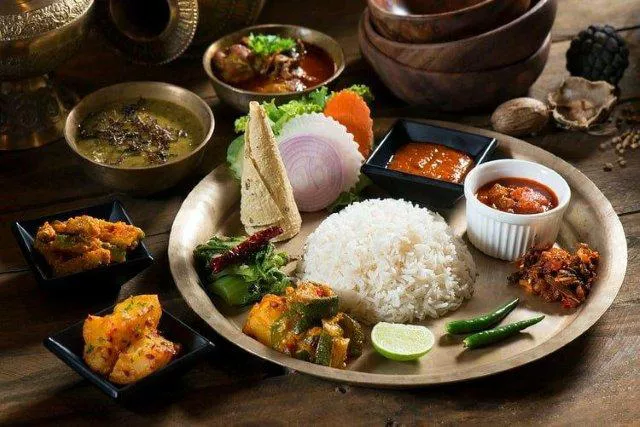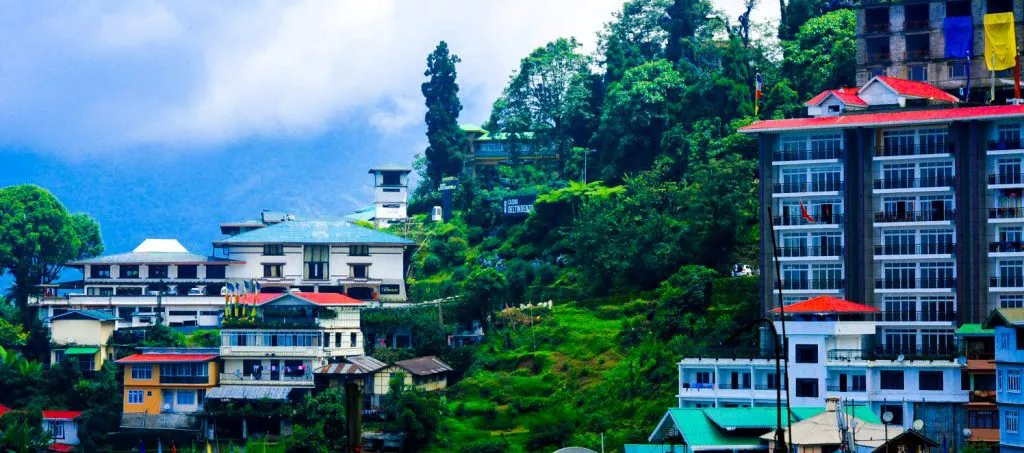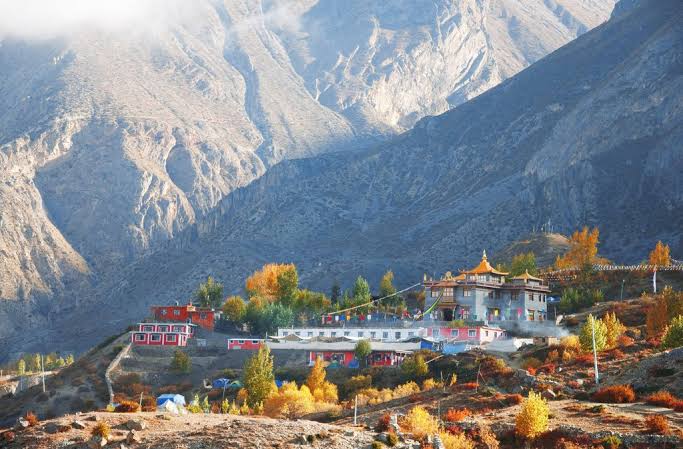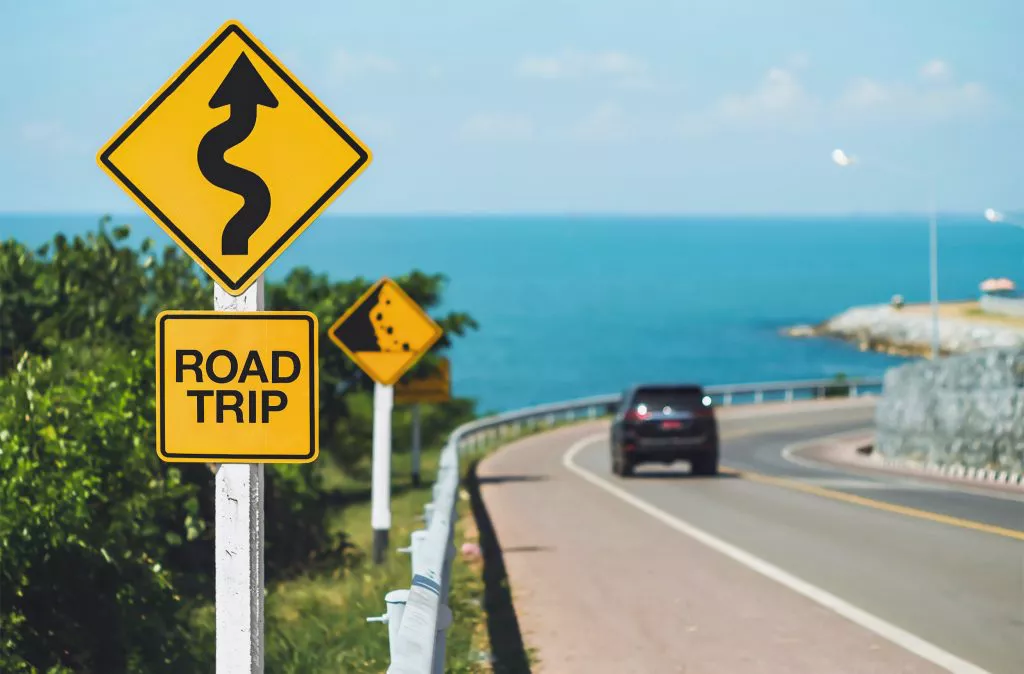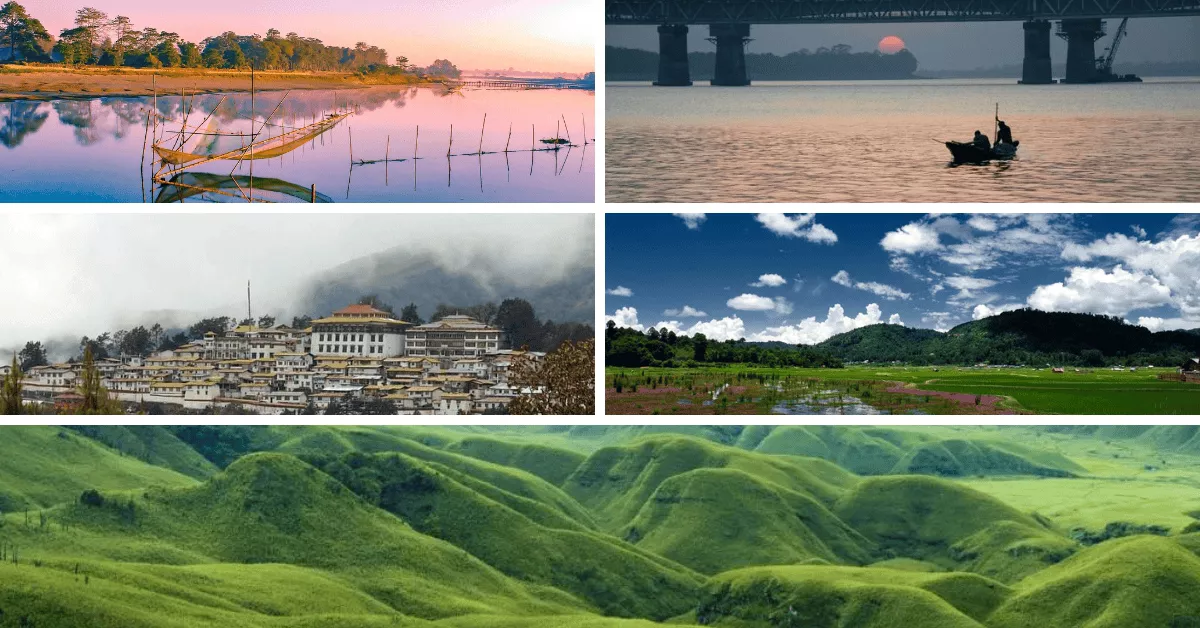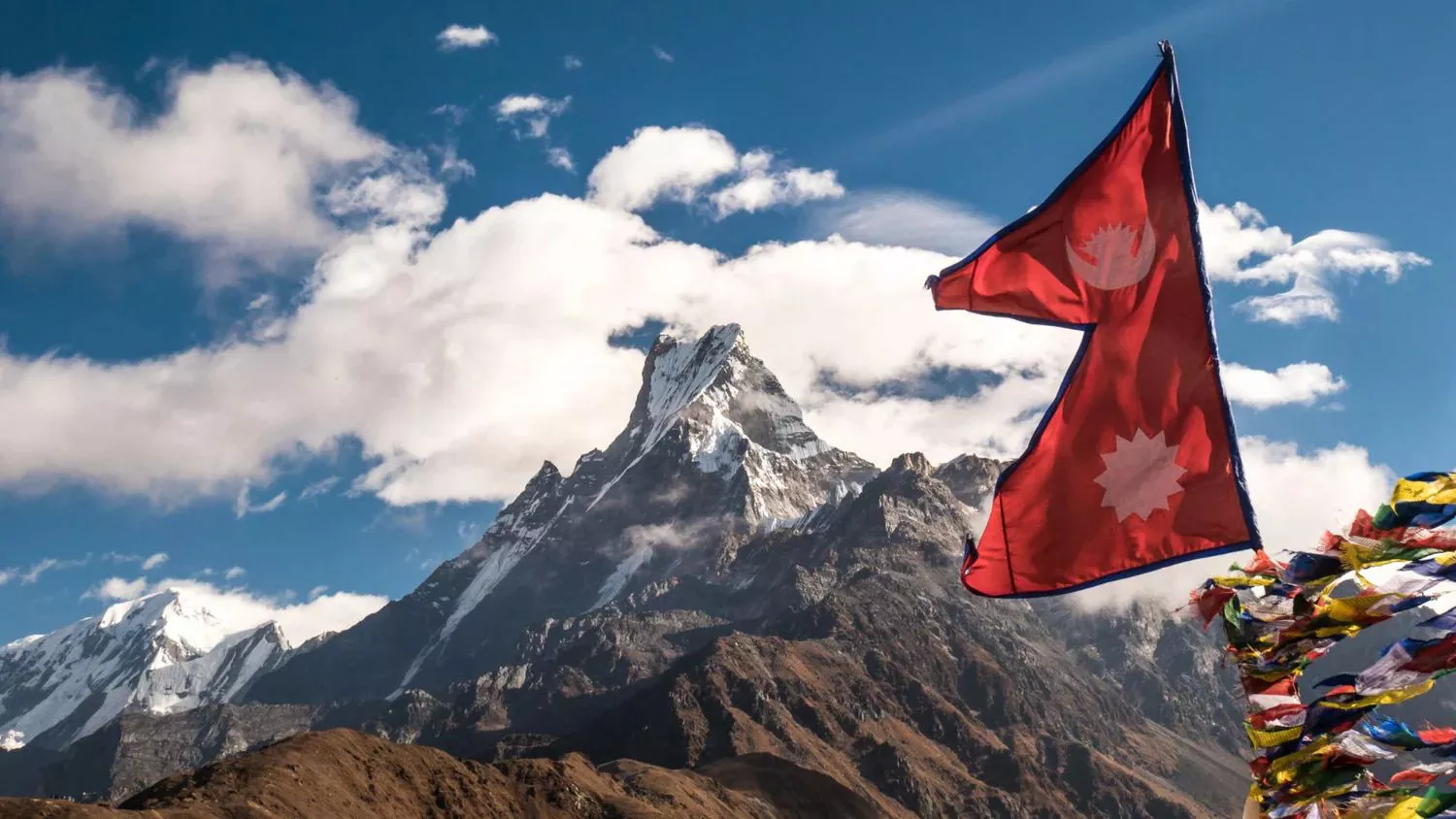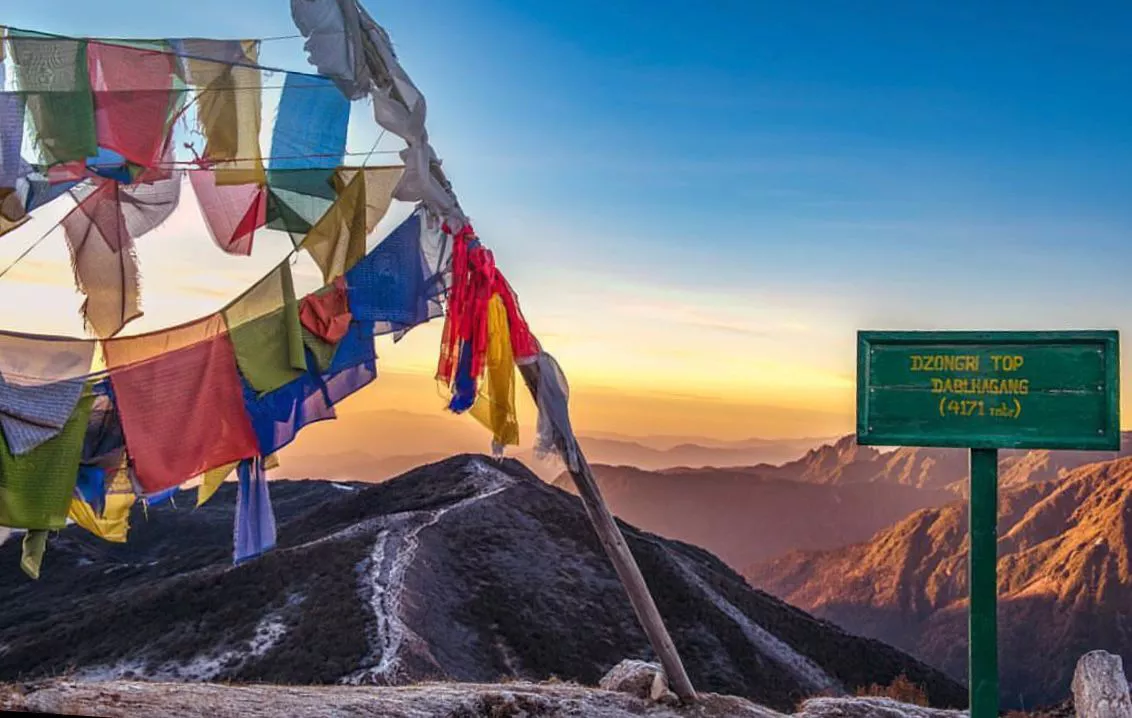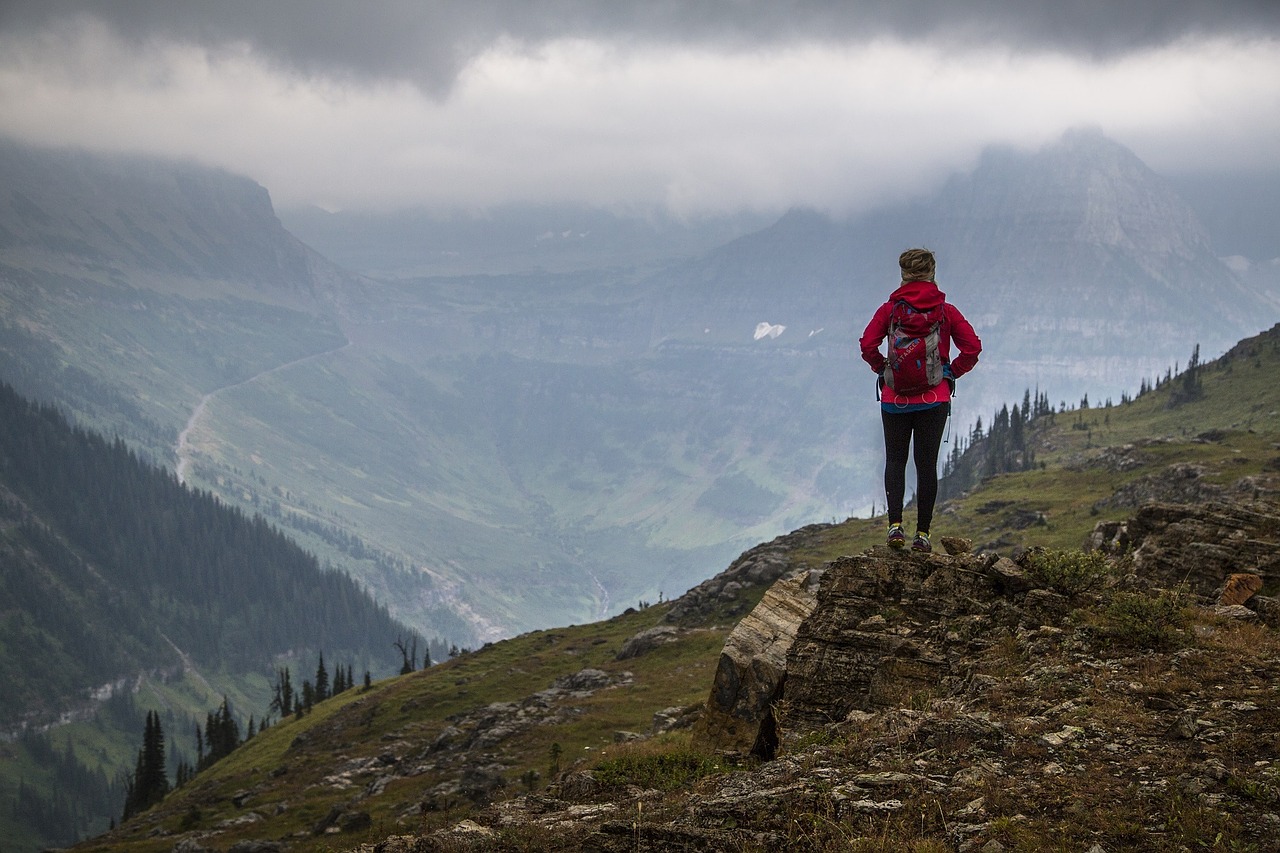
Treks in Bhutan offer panoramic views of unspoiled landscapes endowed with a diverse array of flora and fauna. These invigorating experiences are intermingled with opportunities to visit age-old Buddhist temples and monasteries as well as get a glimpse into local village life.
View of Bhutan
The Bumthang Owl Trek is among some of the very best treks in Bhutan. This is a 3-day trek around Bumthang (north-central Bhutan) and is great for amateur trekkers.
The Bumthang Owl trail takes you through forests of blue pine, birch, maple, spruce, juniper, and bamboo and exposes the trekker to a rugged landscape draped in various types of rhododendrons. The trail traverses through the tranquil ridges and mountains of Bumthang providing glorious views of Mt. Gangkar Puensum, the highest unclimbed peak in the world, along the way. You will come across abundant avian wildlife in this area, and if you’re an avid birder, the best time to visit is in the months of April and May, when you can spot the beautiful Himalayan Tragopan and other pheasants.
The best time to visit Bhutan to undertake this trek is in late spring, between April and early June when the rhododendrons are in full bloom. Trekking through this area in autumn is a different experience altogether as there is a possibility of encountering Himalayan black bears.
Bumthang Dzong
For culture lovers, the best time to visit Bhutan is during the local festivals, where you will be able to enjoy an additional insight into the traditions and culture of Bhutan.
Trek itinerary:
Day 1: Manchugang - Dhur Village
Time 4-5 hours | Altitude 3450m
The Bumthang Owl trek starts from Manchugang and takes you to Dhur village (2900m). The inhabitants of the village are the nomadic Kheps and Brokpas. This village has two distinct dialects, the Bumthang Kha and the Brokke, a language spoken by the nomads. Near the river is a traditional water-driven flour mill that was once a source of livelihood for the people of Dhur village. The trek continues with an uphill climb through blue pine forests towards the campsite at Schonath (3450m), which is surrounded by juniper and hemlock trees. The otherwise silent nights are punctuated with the hooting of owls, hence, the name ‘The Owl Trek’.
Day 2: Dhur Village - Drangela Pass
Time 3-4 hours | Altitude 3470m
The second day of Bumthang Owl trek is mainly through lush forests of hemlock, spruce, fir, and many species of rhododendrons, which are in full bloom during the months of April and May. The trail also takes you through the forests of bamboo.
After few hours of walking you will arrive at the Drangela Pass (3600m). Climbing up the Kitiphu Ridge brings you to the campsite for the night at an altitude of about 3870m. From this point you can have a fresh view of snow-capped mountains and valleys below. This is also when you can view Mt. Gangkarpunsum (7541m), the highest unclimbed peak in the world.
Day 3: Drangela Pass - Tharpaling Monastery
Time 4-5 hours
On day 3 you will make a descent towards the monasteries of Zambhalha, Chuedak, and Tharpaling. Chuedak monastery is the most unusual in Bhutan. It has 100 Avoloketeshvaras in the form of Chukchizhey (eleven heads) that you will see nowhere else in Bhutan.
Towards the afternoon the trek will take you along the ridge of Kikila and follow the traditional trek route between Trongsa and Bumthang (the Royal Heritage Trail) through beautiful hills and forests. Finally you will have the best view of Jakar Dzong. The Bumthang Owl trek at Bumthang ends here.
Trek info at a glance:
Season: March, April, May, June, November, December
No. of days: 3 days
Bhutan trek inclusions:
Every trek in Bhutan is accompanied by a guide, cook, camping assistant, and a few horsemen and horses to carry gear.
Trek essentials:
• Lightweight sleeping pad
• Waterproof hiking boots
• Sleeping bag
• Wide mouth water bottle with a water filter (like LifeStraw)
• ORS
• First aid: bandages, disinfectant, aspirin
Other famous trek routes in Bhutan:
Jomolhari Laya Gasa Trek, Bhutan
Snowman trek, Bhutan
Dagala Thousand lakes trek, Bhutan
The Bhutanese name for Bhutan, Druk Yul, means "Land of the Thunder Dragon". Bhutan offers unique architectural marvels, tsechuas (dance forms), cuisines, textiles, handicrafts, trekking trails, and archery competitions all under its umbrella. What more can a traveller need?
Read more on different places of Bhutan here:
Phobjikha Valley is a small town in the central part of Bhutan. Like many other beautiful places to see in Bhutan, Phobjikha is bestowed with valleys and is surrounded by mountains and lush greenery. The place is known for its beautiful landscapes and passes and a day’s hike will take you through the town woods, and valley.
The beautiful valley of Paro encapsulates within itself a rich culture, scenic beauty, and hundreds of myths and legends. It is home to many of Bhutan's oldest temples and monasteries, national museum, and the country's only airport. Paro is also one of the most fertile valleys in this kingdom, producing a bulk of the locally famous red rice from its terraced fields.
This town is situated in the Himalayas of Bhutan. It's known for the Punakha Dzong, a 17th-century fortress at the juncture of the Pho and Mo Chhu rivers. The fortress hosts the Punakha Tshechu, a religious festival featuring masked dances and music. In the surrounding Punakha Valley, temples include the fertility-focused Chimi Lhakhang and the hilltop Khamsum Yulley Namgyal Chorten, which has river and mountain views.
The capital town of Bhutan and the centre of government, religion and commerce, Thimphu is a unique city with an unusual mixture of modern development alongside ancient traditions. Although not what one expects from a capital city, Thimphu is still a fitting and lively place. Home to civil servants, expatriates, and monk body, Thimphu maintains a strong national character in its architectural style.
It is the second largest town in Bhutan. It is a border town in southern Bhutan and is the administrative seat of Chukha District. The town occupies parts of both Phuentsholing Gewog and Sampheling Gewog. Phuentsholing adjoins the Indian town of Jaigaon, and cross-border trade has resulted in a thriving local economy. The town once housed the headquarters of the Bank of Bhutan, which has now been shifted to Thimphu.
Haa is also known as “the hidden land rice valley.” Its major feature is its narrow north-south valley. Potatoes, chillies, apples, and other cash crops are grown on the valley floor. Almost 78 percent of Haa is covered with forest. Haa has some of the most interesting local legends and folklore.
Trongsa means “new village” in Dzongkha and is situated in Central Bhutan. Its location offers a fine view of the Black Mountain Range. Farming is the main occupation and potato cultivation is the main source of cash income.
This place is the spiritual heartland of Bhutan and home to the most ancient and precious Buddhist sites. Its total area is 2717 sq.km with altitude ranging from 2,400 to 6,000m. The language spoken in Bumthang is known as Bumthangkha.
It is situated in the north-east of Bhutan. Lhuentse is one of the most isolated Dzongkhangs but is known for several renowned pilgrimage sites of Guru Padmasambhava, which includes Singye Dzong, Baeyul Khenpajong, and Phunying La.
The valley of Gangtey is one of the most beautiful spots in Bhutan. The surprise of finding such a wide, flat valley without any trees after the hard climb through dense forests is augmented by an impression of vast space, and extremely rare experience in Bhutan.
Monggar marks the beginning of eastern Bhutan and is the second largest town in the east. It is the fastest-developing dzongkhag in eastern Bhutan. Monggar is noted for its lemon grass, a plant that can be used to produce an essential oil.
It is one of the largest and most densely populated Dzonkhangs in the country after Thimphu. With altitude ranging from 1200 m to 4800 m, it enjoys a warm climate and is rich in tropical fruits and crops. Potatoes, vegetables, essential oils, and woven local textiles are the main source of income.
It is the newest Dzongkhang created in 1992 by separating the erstwhile Trashiyangte Dungkhang from Trashigang Dzongkhang. Trashiyangtse is also known for its wildlife Sanctuary at Bumdelling.
Samdrup Jongkhar lies in the south-eastern part of Bhutan and holds the distinction of being the oldest town in Bhutan. This border town is a bustling little settlement with hawkers coming from neighbouring India and Assam.
